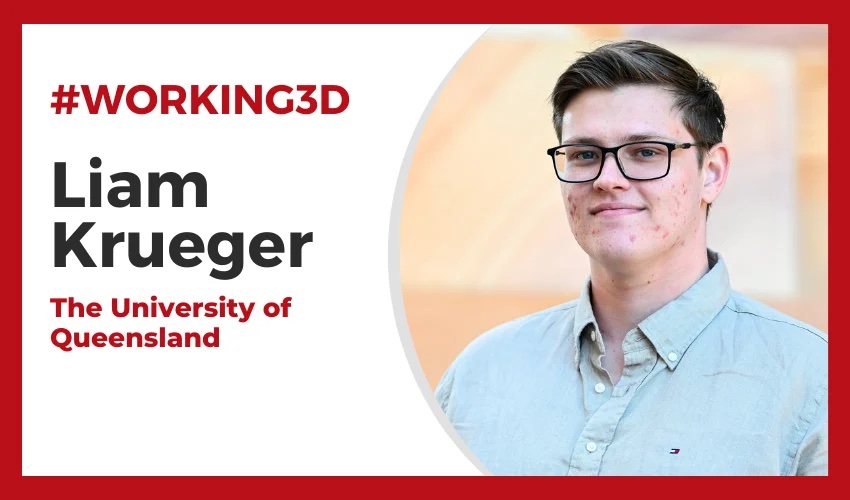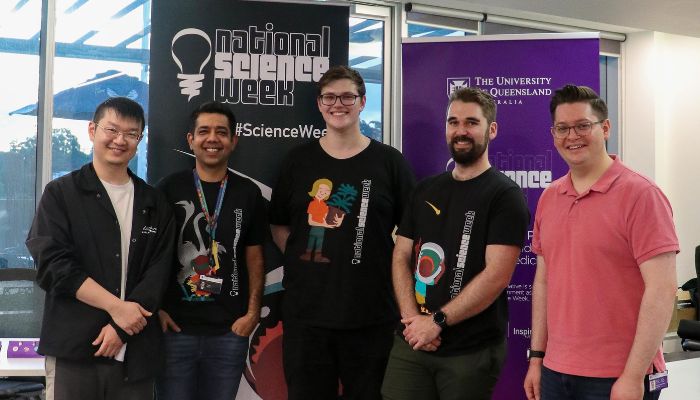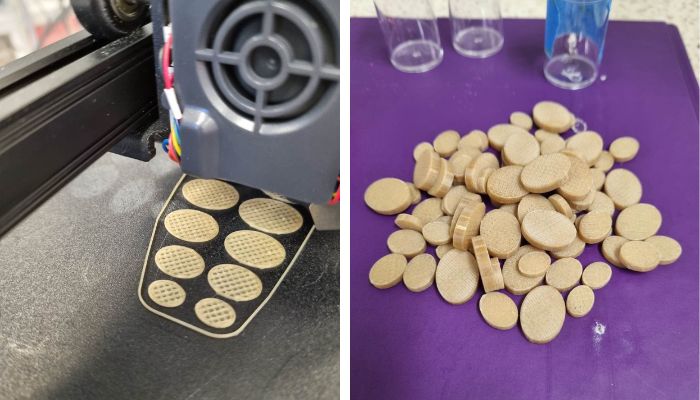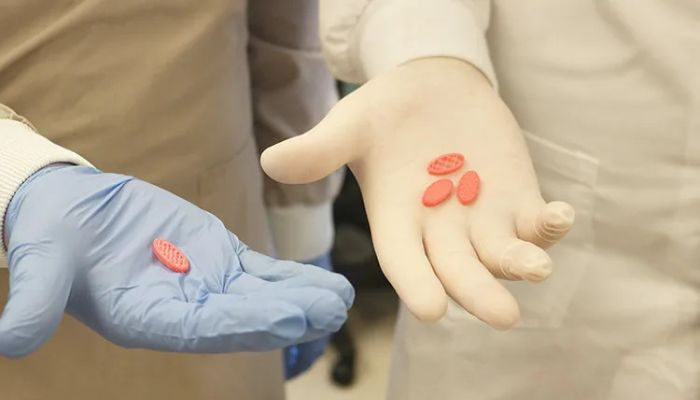#Working3D: Six Questions for a Pharmaceutical 3D Printing Researcher

Additive manufacturing in the medical sector is continuously improving and progressing. Innovations and applications are flourishing, demonstrating the potential of 3D technologies to improve the daily lives of many patients. The pharmaceutical field is no exception, and the gradual launch of several different forms of 3D printed medication is testimony to the advances being made. The use of 3D printing makes it possible, among other things, to create medicines with personalized dosing of active ingredients, to combine several drugs in a single tablet according to the needs of each patient, and to modify their shape and consistency to make them more suitable, for example, for children or the elderly. To find out more about this world and what it means to work in 3D printing research for the pharmaceutical industry, we interviewed Liam Krueger, a PhD student specializing in pharmaceutical 3D printing at the University of Queensland.
3DN: Could you introduce yourself?
Hi, my name is Liam Krueger, I’m a pharmacist and final year PhD student studying 3D printing of pharmaceuticals at the University of Queensland, Australia. I finished my pharmacy degree in 2020 and went straight into my PhD. Although I’m nearing the end of this chapter, I’m still very passionate and motivated to continue my research.

Liam Krueger, center, with colleagues from the University of Queensland.
3DN: How did you discover additive manufacturing?
When I was a pharmacy student, my research supervisor, Professor Amirali Popat, who is now my thesis supervisor, was working on an extrusion and fused deposition modeling project, which appealed to me. Since then, we have considerably expanded our 3D printing section, with two hot-melt extruders and a dozen 3D printers.
3DN: What is your current role? What is a typical day like?
As a PhD student, I spend a lot of time in the lab, researching and writing. Much of my work involves experimenting with new polymer blends and combining them with drugs to test many aspects, including stability, printability and drug release speed. I often tinker with our hot-melt extruder and 3D printers, modifying them to work with some of the unique polymers I study. Some polymers have very different properties, including biocompatibility, dissolution rate, melting point, pH sensitivity and other physical factors such as brittleness or flexibility after extrusion. We also use methods such as high-performance liquid chromatography (HPLC), thermogravimetric analysis (TGA) and differential scanning calorimetry (DSC), which give us more information about the drug’s thermal stability and possible degradation, as well as its crystalline or amorphous state.

3D printing makes it possible to create customized drugs in terms of consistency and dosage to meet specific patient needs.
3DN: What qualifications and experience are required for your role?
In general, to apply for a PhD, you need to have a bachelor’s degree or higher, and some research experience, for example as part of a graduate project or master’s degree. I think there are many different paths in this field. For example, my training as a pharmacist is useful for the clinical part and real-life applications, but a background in mechanical or software engineering would be very useful for the extrusion and printing processes. Similarly, a background in polymer chemistry could be useful in identifying the best polymers for each specific use. Before this project, I knew virtually nothing about how 3D printers work, but my PhD has led me to develop my own polymer blends and design tablets that could play a role in medical clinics in the future.
3DN: What are the biggest challenges you face in your work as a pharmaceutical researcher in 3D printing?
Without an industrial partner, it can be difficult to find funding. One of the positive aspects of FDM technology, however, is that it has become open source, so at least the printers and their software are now very accessible. Another problem I’ve found is that there aren’t many researchers in this field in Australia, which makes it a little difficult to make contact and share ideas with others.
Another concern is regulatory status: the kind of 3D printing we’re doing here seems to fall into a gray area between compounding, which is the preparation of customized drugs to meet specific patient needs, and manufacturing. There are no examples in Australia, and very few internationally, of customized 3D-printed pharmaceuticals being supplied to patients. The situation is delicate and will require ongoing collaboration between researchers, industry and regulators, but it seems inevitable that large-scale integration of this technology will soon become a reality.

3D printing of drugs is already a reality, but the research continues.
3DN: What advice would you give to someone who wants to work in the pharmaceutical and 3D printing sector?
If you’re passionate about combining pharmaceutical research with technology, and an opportunity presents itself, you should seize it! It’s a very new field, but interest continues to grow rapidly and, in the next few years, it could really change the way we approach personalized medicine. You can find out more about Liam Krueger’s work HERE.
What do you think of Liam Krueger’s developments and research work? Let us know in a comment below or on our LinkedIn, Facebook, and Twitter pages! Don’t forget to sign up for our free weekly Newsletter here, the latest 3D printing news straight to your inbox! You can also find all our videos on our YouTube channel.
*All Photo Credits: Liam Krueger/ The University of Queensland






